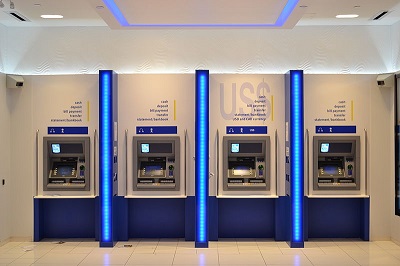According to the research from the UBS investment bank, smartphones could lead to widespread closures.
As a growing number of people start to use mobile banking as a regular part of their interactions with their accounts, it is now being predicted that hundreds of bank branches across Australia may be forced to close.
A survey was conducted by the UBS investment bank and it predicted more than 600 closures.
Analysts from UBS in New York, London, Japan, and Hong Kong partnered up with KPMG in order to produce a massive 54-page report that it has now published and released. Within it, 67 different bank management teams were surveyed across 18 different countries. Among them, there was an average expectation of a branch reduction of 5.6 percent as a direct result of the rise of mobile banking use.
That said, in Australia, that figure is predicted to be about twice the average of closures from mobile banking strategies.
 The report showed that despite the fact that Australia has seen a steady number of bank branches for quite a long time, the survey respondents feel that the country will be facing an 11 percent closure rate as a result of banking over smartphones and other mobile devices.
The report showed that despite the fact that Australia has seen a steady number of bank branches for quite a long time, the survey respondents feel that the country will be facing an 11 percent closure rate as a result of banking over smartphones and other mobile devices.
Based on June 2014 data from the Australian Prudential Regulation Authority, there were 5483 bank branches in the country at that time. Should the predictions of 11 percent be accurate, that would mean that there would be an estimated 603 branch closures across the country.
Because of this fear, many bank branches across the country have worked hard to reconfigure themselves in order to create a much more drop-in style environment and by reducing or removing tellers. This makes it possible for customers to be sold more types of products at their own convenience.
According to the UBS statistics over the span of the next three years, it could easily be that a cumulative reduction of costs by about 10 percent, as well as a boost of 6 percent rise in bank revenues. Over that same span of time, it is anticipated that there will reach the point that 46 percent of mobile related transactions, which Is an increase over the current 25 percent, and the 13 percent from 2013.
That will mean that these smartphone apps will have increased by double in that market by 2020.
According to the data revealed in a new Fiserv commissioned report, the number of mobile banking users in the United Kingdom is likely to nearly double by the year 2020, bringing it from the current 17.8 million to become 32.6 million.
The research also found that online banking occurring over laptops and computers will also keep growing.
The report was entitled the “Future Trends in UK Banking” and was created by the Center for Economics and Business Research. What it found was that mobile banking apps will be growing to reach £3.4 billion per week between now and 2020. At the same time, online banking is predicted to rise to £9.4 billion per week during that same span of time. This will bring about a considerable increase that is expected to reach a total of £12.8 billion per week by way of all online channels.
At the moment, only about 34 percent of adults in the United Kingdom are believed to use mobile banking services.
 As the use of smartphones and tablets grows very quickly throughout the United Kingdom and adults in that country seek a larger number of mobile financial services, the report has indicated that there will be a near doubling of usage by 2020. At that time, it is expected that 60 percent of U.K. adults will be using those services.
As the use of smartphones and tablets grows very quickly throughout the United Kingdom and adults in that country seek a larger number of mobile financial services, the report has indicated that there will be a near doubling of usage by 2020. At that time, it is expected that 60 percent of U.K. adults will be using those services.
If that many new device users start to use smartphone banking apps, it will mean that there will be 14.8 million new users of those services over a span of five years. This could present a considerable opportunity, says Fiserv, for banks of all sizes to develop new and innovative business models in order to be able to boost their appeal to consumers. It will also allow larger and more established banks to enhance their offerings through broader and improved digital services.
According to the Fiserve chief marketing officer, international group, Travers Clark-Walker, when discussing this mobile banking research, “The technological developments allowing for the recent surge in digital banking are also enabling banks and new entrants to reach potential customers more quickly and cost effectively than ever before.”
 The report showed that despite the fact that Australia has seen a steady number of bank branches for quite a long time, the survey respondents feel that the country will be facing an 11 percent closure rate as a result of banking over smartphones and other mobile devices.
The report showed that despite the fact that Australia has seen a steady number of bank branches for quite a long time, the survey respondents feel that the country will be facing an 11 percent closure rate as a result of banking over smartphones and other mobile devices.
 As the use of smartphones and tablets grows very quickly throughout the United Kingdom and adults in that country seek a larger number of mobile financial services, the report has indicated that there will be a near doubling of usage by 2020. At that time, it is expected that 60 percent of U.K. adults will be using those services.
As the use of smartphones and tablets grows very quickly throughout the United Kingdom and adults in that country seek a larger number of mobile financial services, the report has indicated that there will be a near doubling of usage by 2020. At that time, it is expected that 60 percent of U.K. adults will be using those services.